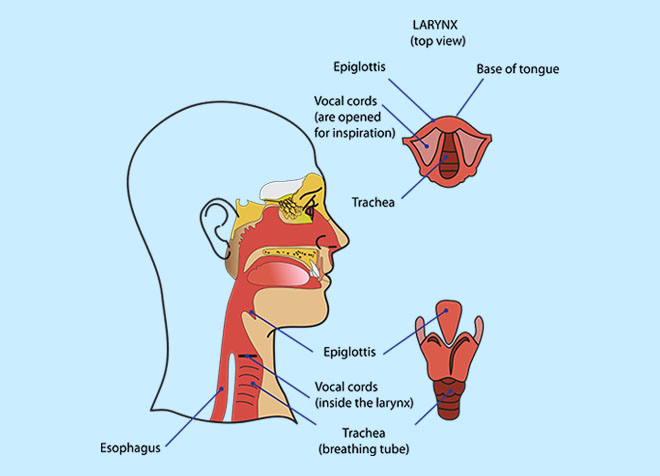Exercises to Warm up your Voice before a Speech
December 4, 2017 - Dom Barnard
Just like any other muscle, your vocal muscles need to be warmed up to work at their best. Vocal warm up is important for people whose career depends on their voice (singers, actors, TV and radio presenters), for occupational voice users (teachers, salespeople) and for anyone who is preparing to give a presentation or speech.
When you speak, you make sound in your larynx (voice box) with your vocal folds. Warming up stretches the vocal folds and increases blood flow to the larynx and other body parts including your lungs, lips and tongue. This reduces vocal fatigue and hoarseness when using your voice over long periods. It also lets you reach a wider range of pitch, which is important for elevating your speech.
In this article, we discuss why vocal warm up is important and explain several vocal exercises you can use before your speech or presentation. You should allow 15 minutes to perform a complete warm up and remember to keep well hydrated during the exercises.
Why is vocal warm up important for a speech?
Effective verbal communication depends not only on what you say, but how you say it. The content of what you say will be lost on the audience with a dull, monotonic presentation.
When we undergo physical activity, a warm up can prevent injury and long term damage to our bodies. The same is true for your voice – a short vocal warm up improves performance of the individual muscles of the thorax (chest), larynx and upper vocal tract (throat, mouth).
This improves the quality of the sound you make and helps the tone flow more naturally. It also helps prevent vocal injury when using your voice extensively.

Diagram showing the location of the vocal cords and larynx. These need to be warmed up before extensive use.
A vocal warm up balances the air pressure you are sending to your vocal chords, which makes it easy to talk through your different vocal registers (chest voice, mixed voice, and head voice). It builds a bridge between these vocal registers, enabling you to reach a much wider range of pitches and tones when speaking.
Vocal warm up exercises
Pay attention to your posture while you do these exercises. A relaxed posture is important for full and easy range of motion of the muscles and to fully support your breathing.
Warm Up #1: Jaw release
Reduces tension in the mouth and jaw area during speaking.
- Place your palms on the sides of your face and slowly massage the jaw and cheek muscles with slow small circular motions
- Continue to massage while lowering and raising your jaw
- Add the sound – “mamamama” with a very light lip contact for the “m”
- Change to “wawawawa” with very light lip round for a slightly distorted “w”
Warm Up #2: Lip trills
Release lip tension and connects your breathing and speaking.
- Place your lips loosely together and release air in a steady stream to create a trill or raspberry sound
- First try it on an “h” sound. Then repeat on a “b” sound
- Hold the sound steady and keep the air moving past the lips
- Next try to repeat the b-trill going slowly up and down the scales
- Don’t go beyond what is comfortable at the top or bottom of the scale
Warm Up #3: Tongue trill
Relaxes the tongue and engages your breathing and voice.
- Lightly place your tongue tip behind your upper teeth and exhale while vibrating your tongue tip in a trill
- Hold the sound steady and keep the breathing connected
- Now try to vary the pitch up and down the scale while trilling
- Again, don’t push beyond what is comfortable at the top or bottom of your scale
Warm Up #4: Two octave scales
Stretches your vocal folds.
- Start in a low pitch and slowly go up the scale on an “aa” sound
- Don’t push the top or bottom of your range but do try to increase the range gently each time you do the scales
- Repeat a few times and then reverse direction, going from chest to head. Repeat using other vowels.
Vocal Warm-Up Exercises
A 5-minute strength training workout for your voice to get your ready for a presentation, singing, or any type of performance.
Learn MoreWarm Up #5: Lip buzzing
Improves the resonant focus of the sound and continues work with maximal stretch on the vocal folds.
- Put you lips loosely together and exhale by vibrating your lips
- Make sure to keep your tongue relaxed as you exhale
- Repeat the inhaled yawn, and vocalize as you trill your lips
- Repeat again, and sweep up in pitch then back down
- If this begins to tickle your lips and nose, then you’re doing it correctly
Warm Up #6: Humming
Highlights different vibrations in your lips, teeth and facial bones.
- Begin with your lips gently closed with jaw released
- Take an easy breath in and exhale while humming “hmmmm”
- Repeat and change the “hmmmm” to “ahhhhh” halfway through the exhaled breath
- Try to change nothing but the opening of the mouth
Warm Up #7: Breath support system
- After a slow deep inhalation, expel sharply by contracting the abdominal muscles hard with a loud “huh”
- The larynx and throat should stay relaxed and open
- This is a difficult exercise and excellent focus must be maintained on separating the contractions of the abdominals with the maintenance of relaxed upper airway
- As you improve your ability to perform this correctly, increase the speed and repetitions
Warm Up #8: Low-flow
- Maintain a correct posture with low, relaxed shoulders
- Inhale slowly and deeply (but be careful NOT to lock your shoulders at the top of the inhalation)
- On the exhaled breath, repeat “hello” slowly - there should be little expelled air each time
- Place your palm in front of your lips so you can feel the expelled air
- Do not try to control the pitch, do not force the breath to come out
- Experiment with varying the pitch as you repeat the exercise
Warm Up #9: Cool down
Don’t forget your vocal cool down after a long speech or presentation. Humming is a great way to cool down the voice
- Gently hum the sound “m”, focussing on the vibration and sound on the lips
- Perform this for a couple of minutes to cool down
For additional exercises, visit this article on vocal warm ups.
Example of a vocal warm up
In this video, titled: ‘Here's how to warm up your voice before you speak’, Virginia Tech Associate Professor Greg Justice gives some tips to warm up your voice and ace your presentation.
Using tongue twisters to improve articulation
Tongue twisters are a good way to extend your vocal range and warm up your tongue, mouth and lips. The aim is to say these sentences without extra tension in the tongue, lips, jaw or throat. Keep a good posture and full breath support when going through them.
Initially, do not try to control your pitch, but also make sure you do not get “locked in” to a narrow pitch range. As you warm up, vary the pitch and focus on different elements of your voice – for the three tongue twisters below, focus on either the tongue, lips or jaw for each one.
3 tongue twisters to use before a speech
Peter Piper picked a peck of pickled peppers.
A peck of pickled peppers Peter Piper picked.
If Peter Piper picked a peck of pickled peppers,
Where's the peck of pickled peppers Peter Piper picked?
Denise sees the fleece,
Denise sees the fleas.
At least Denise could sneeze
and feed and freeze the fleas.
One-one was a race horse.
Two-two was one too.
One-one won one race.
Two-two won one too.
Breathing exercises to enhance your voice
Taking the time to breath correctly when giving a presentation will help support your voice. Speaking without taking deep breaths can cause you to talk too quickly and sound rushed. We often do this when we are nervous.
Follow these steps to help improve your breathing:
- Breathe deeply from your lower lungs - imagine a rubber ring around your waist (your diaphragm)
- Breathe in and try to push the ring outwards
- Breathe in through your nose and out through your mouth
- When breathing out, slowly hold an “s” sound link in a hiss
- Repeat again, counting from 1 to 5 as you exhale and varying the pitch
- Avoid raising your shoulders as you breathe in - keep them relaxed and level
- Relax - tension will prevent you from making a good sound
To practice breathing well, try lying on the floor on your back with your hands on your stomach. Breath in (inhale) and your hands will rise. Now breathe out (exhale) and they will lower. In this position it is very hard to breathe incorrectly. Practice breathing exercises regularly to improve your technique and build your lung capacity.
Vocal Warm-Up Exercises
A 5-minute strength training workout for your voice to get your ready for a presentation, singing, or any type of performance.
Learn More
